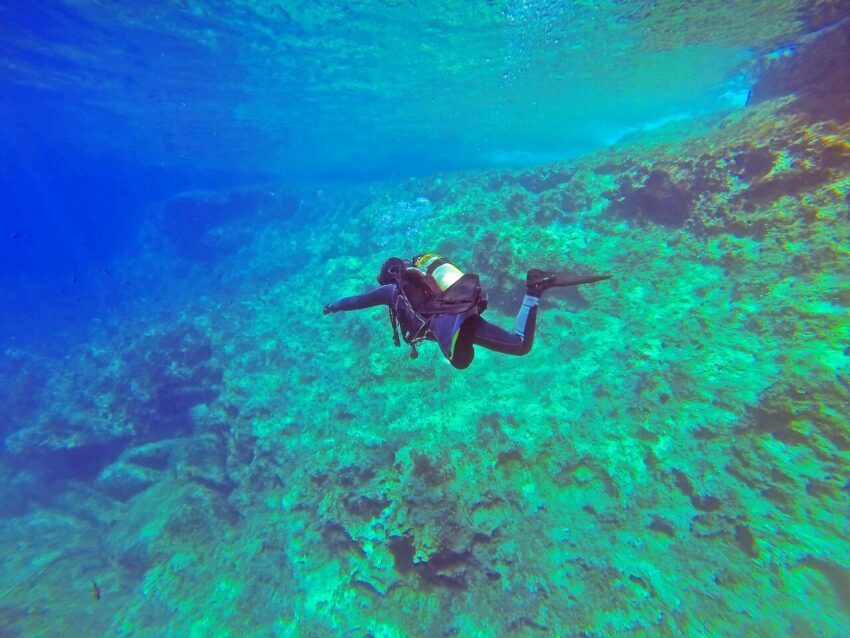Diving With Enriched Air

Enriched air is commonly referred to as Nitrox. It is breathing gas that has more oxygen in it by percentage, than is commonly found in regular atmospheric air. The name Nitrox is derived from Nitrogen and Oxygen, but the proper term is actually Enriched Air Nitrox or EANx. Like with everything else, there are advantages and disadvantages of diving with enriched air as follows:
The Advantages
When one dives with Nitrox, the extra oxygen displaces a little more nitrogen such that the amount of nitrogen is reduced in the mixture and the amount absorbed in the tissues when diving is also reduced.
The good thing with that is that decompression illness is also reduced and you can stay at the bottom safely for longer. When diving repetitively, the load of nitrogen carried from dive to dive is lower than if you were diving with atmospheric air. This again, also goes a long way in decreasing the risk of experiencing decompression illness.
Many divers have reported that they feel less tired and more alert when they use Nitrox in their dives.
The Disadvantages
The downside is that if you breathe in oxygen under pressure, it can be toxic. The pressure level that turns it toxic will actually depend on how much oxygen is in the particular mix that you are breathing.
If you were to use pure oxygen, it would be toxic at about twenty feet. If the mixture you are using is lean i.e. the percentage of oxygen used is less, then you will be able to safely dive deeper before the oxygen becomes toxic.
Oxygen toxicity can be fatal if experienced during a dive. The initial symptoms include violent convulsions. These are then followed by very powerful inhalations before the person loses consciousness.
Oxygen Toxicity
When oxygen hits a critical level of partial pressure, the toxicity begins. Oxygen has a partial pressure of 1.4 with a 0.2 safety margin. Depending on the particular mix of nitrox you are using, partial pressure will be reached at different depths. It is therefore important to take a nitrox course where you will learn how to measure the amount of oxygen you have in the tank you will be using, so that you can calculate at what depths you can go and still remain safe. Without this knowledge, you can easily go past the safety margin of 1.6 and find yourself in a lot of trouble.
You can learn more with us by taking up the PADI EANx course. Contact us today for more information.
